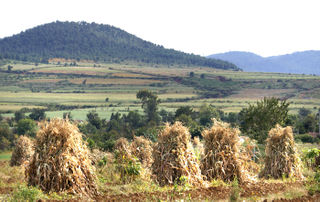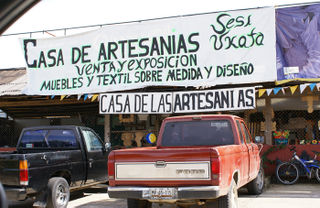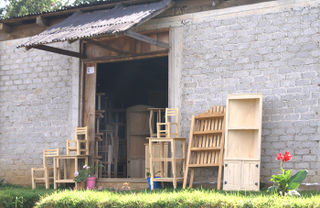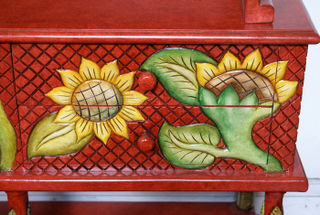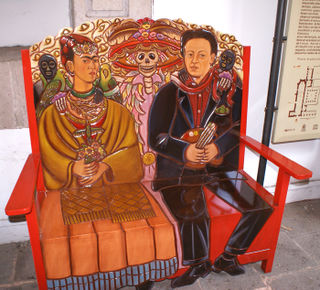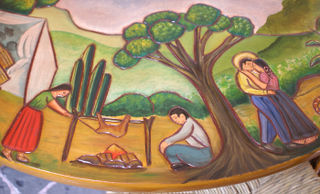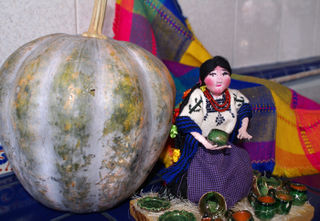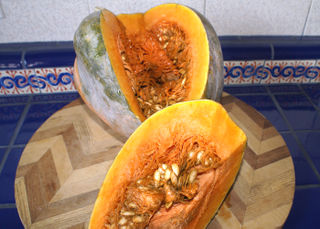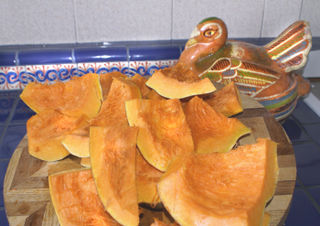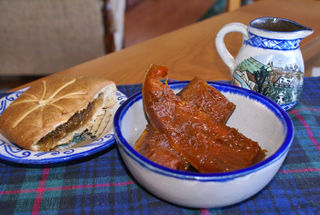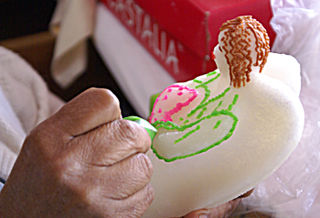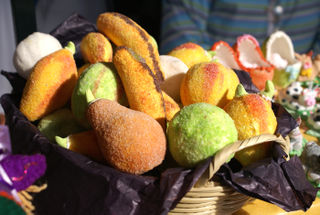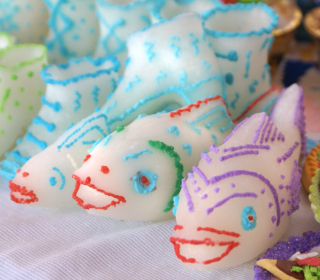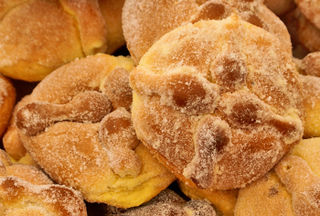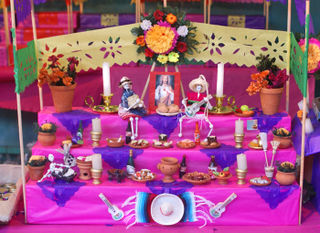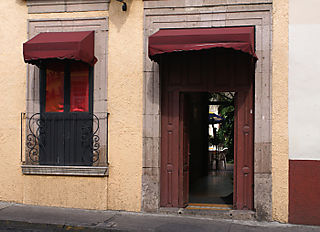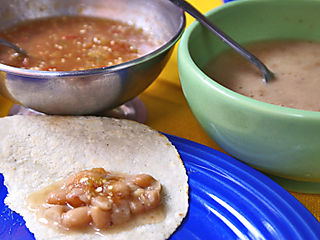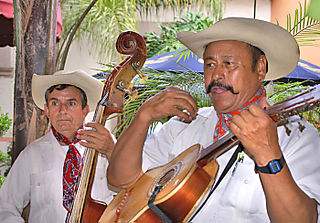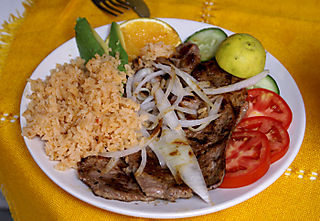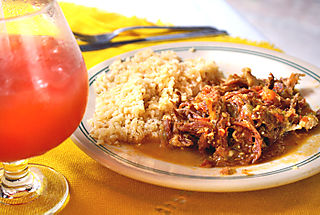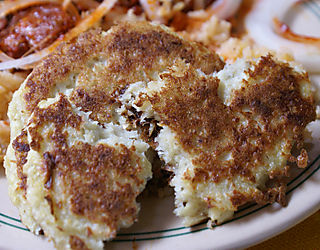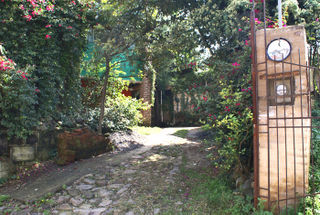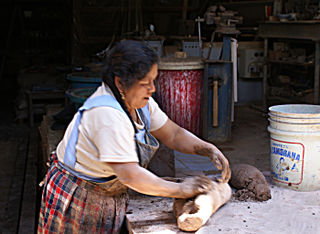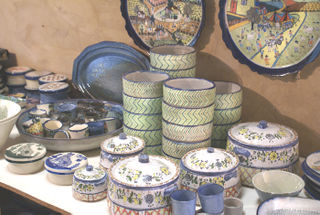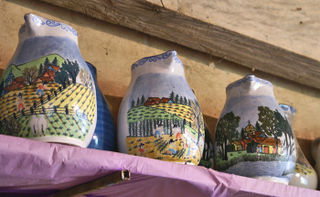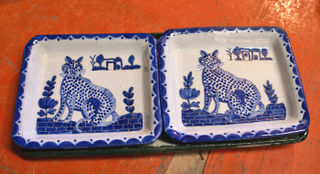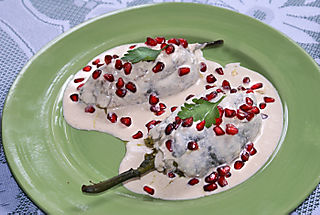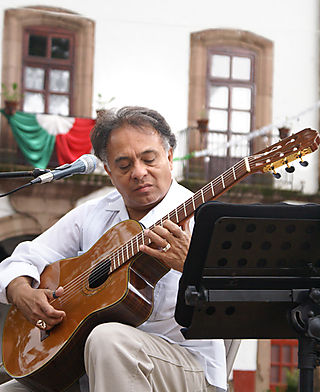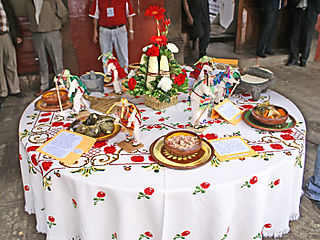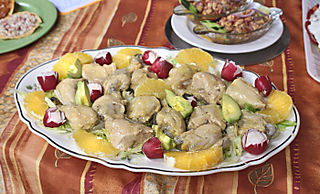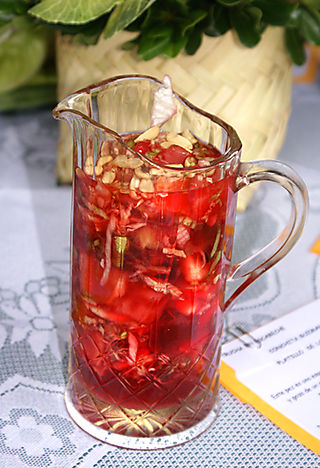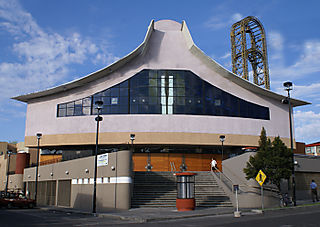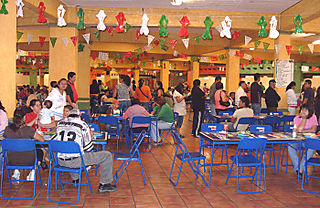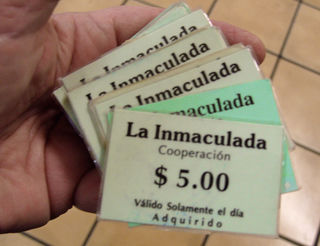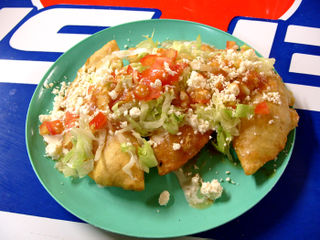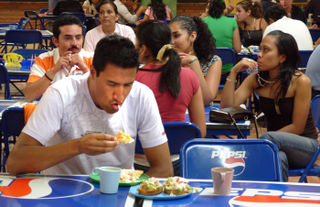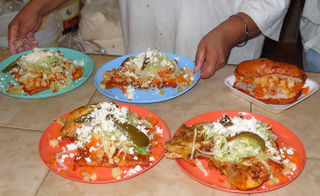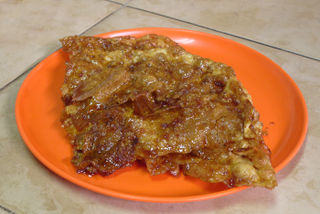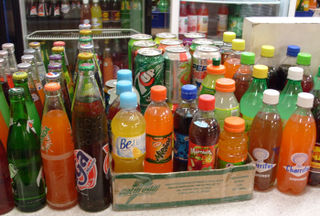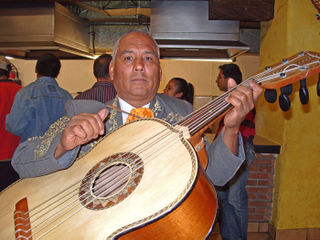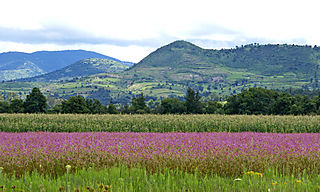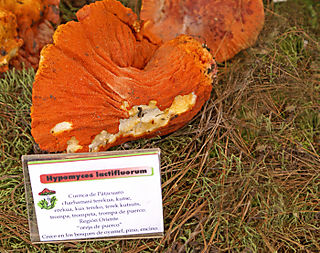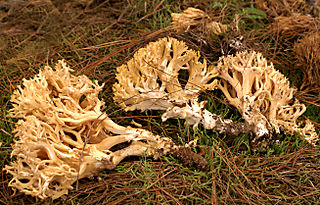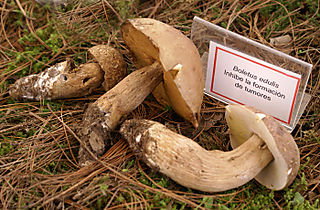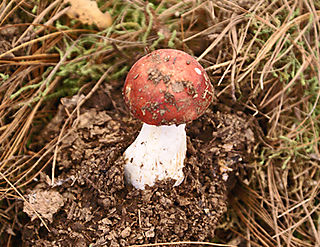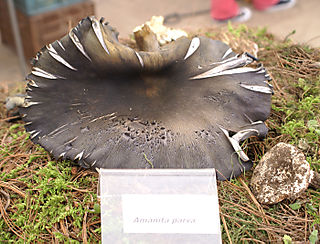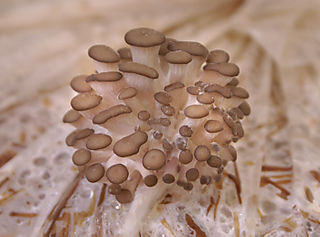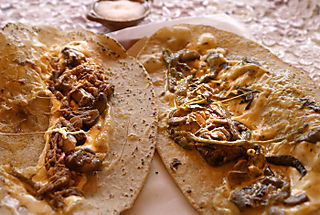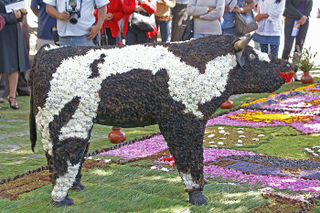
Standing at the entrance to the tapetes florales (floral carpets), this little cow made entirely of flowers and other plant materials welcomed visitors to the inauguration of Morelia's 20th Annual Festival Internacional de Música (International Music Festival).
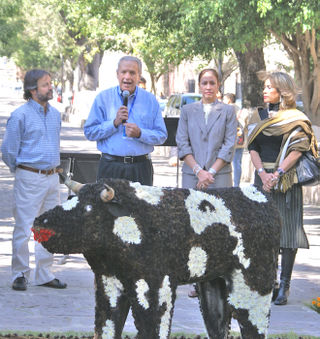
Dignitaries from Argentina (Gustavo Souto, far left) and Mexico (Miguel Bernal Macouzet and Magdalena Ojeda Arana, second and third from left) introduced the tapetes florales.
For two weeks each November, Morelia hosts an exciting international music festival with a particular country or region as its honored guest. In 2007, the guest of honor was the European Union. The guest of honor for 2008 is Argentina. Strains of Argentine folk music and the sensual tango have echoed in Morelia's concert halls and public plazas since the festival opened on November 15. It's easy to notice the music lovers who come from all over Mexico and from numerous other countries: after two weeks, we're all desvelados (sleepless) and a little groggy after the chance to attend more than two dozen concerts in the space of two weeks.
If you'd like a look at last year's festivities, you'll enjoy what you read here.
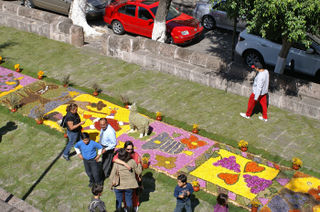
The tapetes florales are laid out along two blocks of Morelia's Calzada Fray Antonio de San Miguel, from the Fuente de las Tarascas to the Santuario de Guadalupe. This photo offers an idea of the dimensions of each segment of the construction. Each of the panels is approximately two meters wide by three meters long.
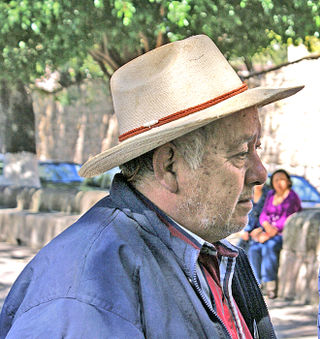
Maestro Neftalí Ayungua Suáres heads up the dozens of Patamban artisans who come to Morelia to create the floral carpets.
Mexico Cooks! loves music of many kinds and avidly looks forward to each November's festival. We've heard glorious concerts this year. However, our favorite part of this grand event happens not in the concert halls, not in the glittery mid-autumn Morelia nights, but on the morning of the festival opening. The tapetes florales (floral carpets), laid out during the night by Maestro Neftalí Ayungua Suáres and his teams of dozens of artisans from Patamban, Michoacán, appear as if by magic along Calzada Fray Antonio de San Miguel, one of Morelia's most charming walking streets.
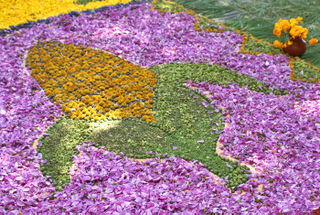
A mazorca (ear of corn), framed by bougainvillea flowers and flanked by a jar of cempasúchiles (marigolds).
Detail of the clay and floral guari (the P'urhepecha word for woman) figure made by Maestro Neftalí and his son.
This year for the first time, vertical figures made of clay and plant materials dot the tapetes florales. The large bunch of flowers the guari (above) holds are chrysanthemums and wild orchids. Her necklace and earrings are made of tejocotes (a fall/winter fruit similar to crab apples).

A rabbit made of two kinds of chrysanthemums and petals from the white mirasol (wild cosmos) flower.
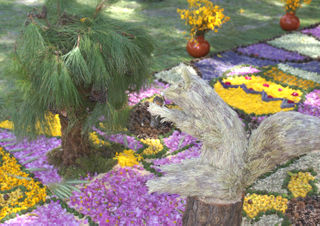
This figural piece is a little pine tree and a squirrel, munching on a pine cone while sitting on a stump.
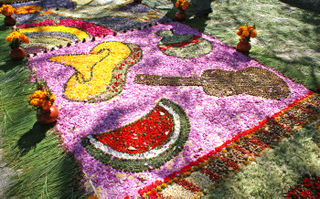
Mexican themes: a slice of sandía (watermelon), a huge sombrero (hat), a colorful olla (jar), and a guitarra (guitar).
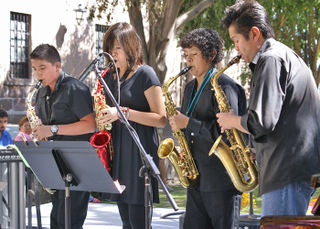
A variety of young music students, including this saxophone quartet, entertained us while we enjoyed walking alongside the tapetes on the Calzada. Dappled sunshine, clear air, and delicious fall temperatures made for a beautiful day.
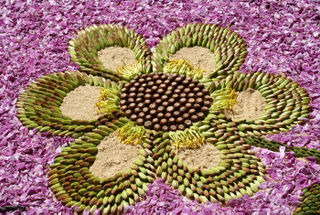
This flower is made of acorns, flower buds, and aserrín (sawdust).
Looking for a tailored-to-your-interests specialized tour in Mexico? Click here: Tours.
